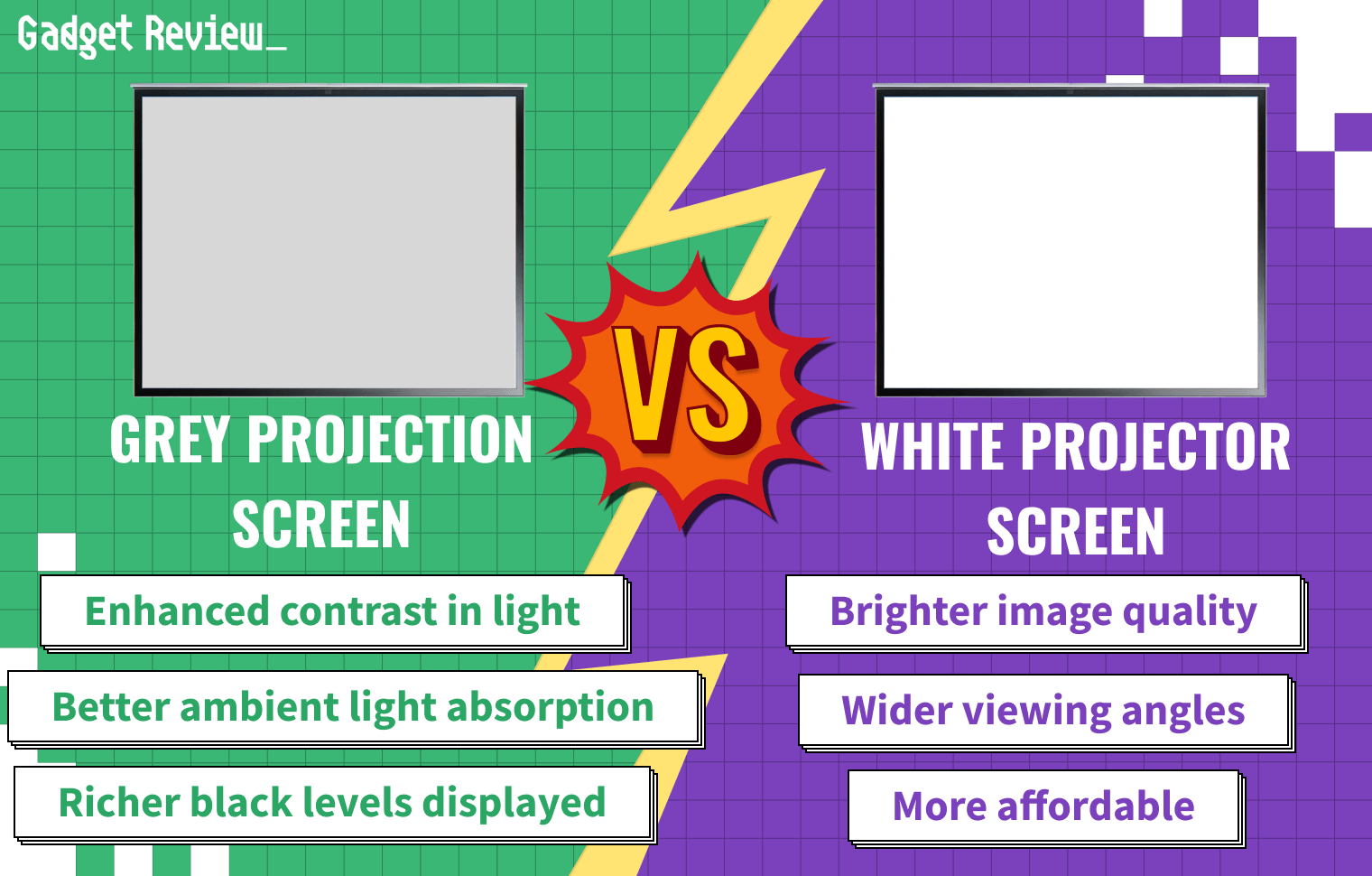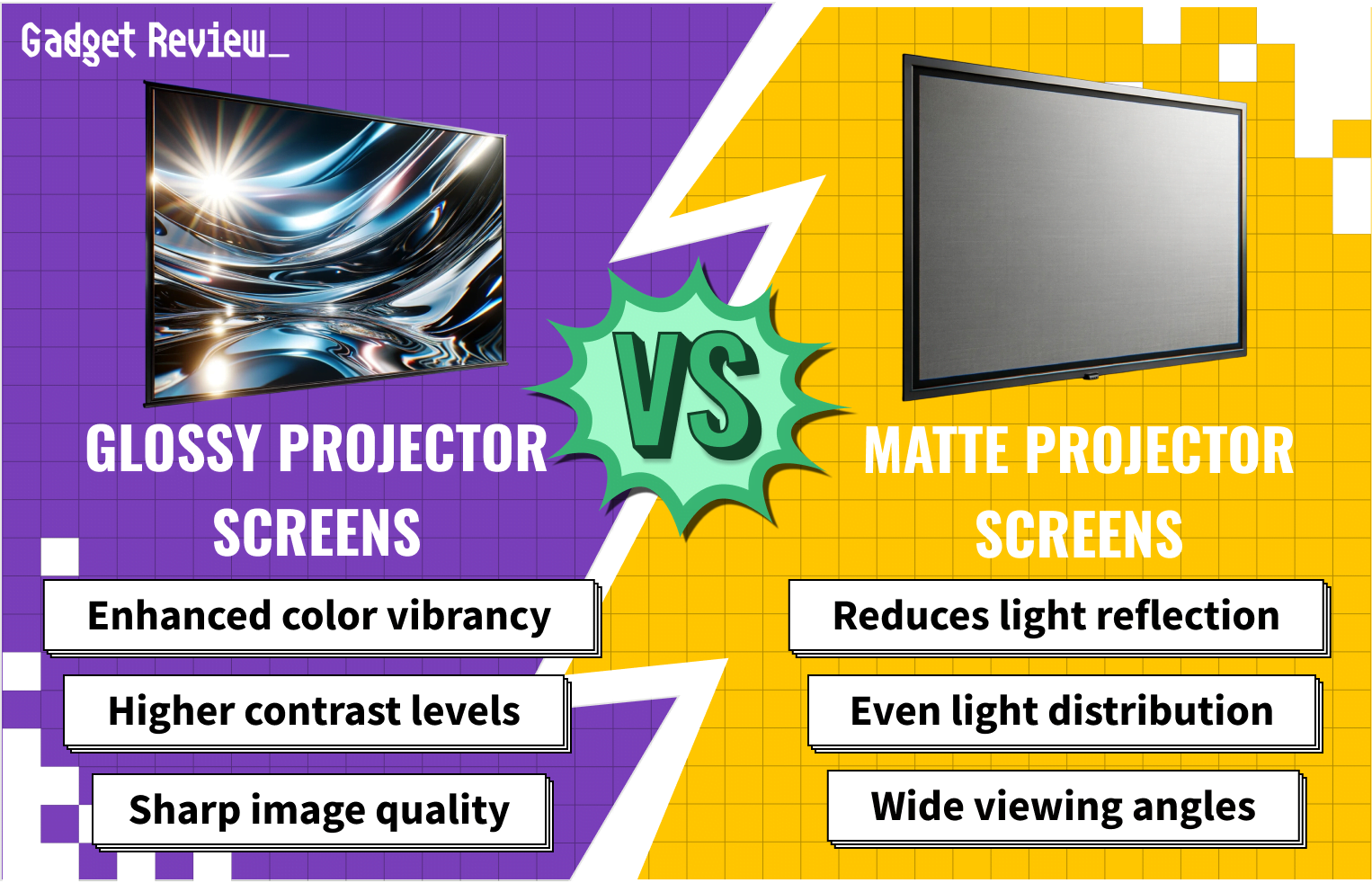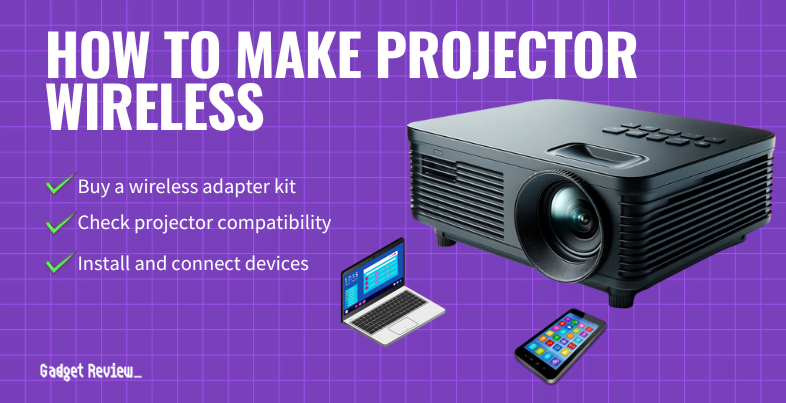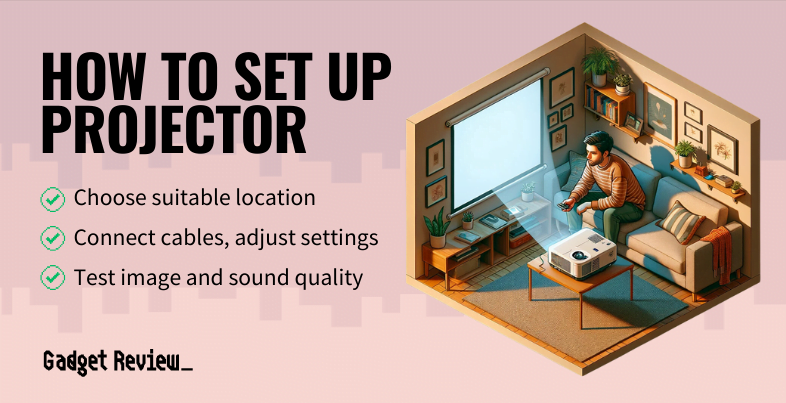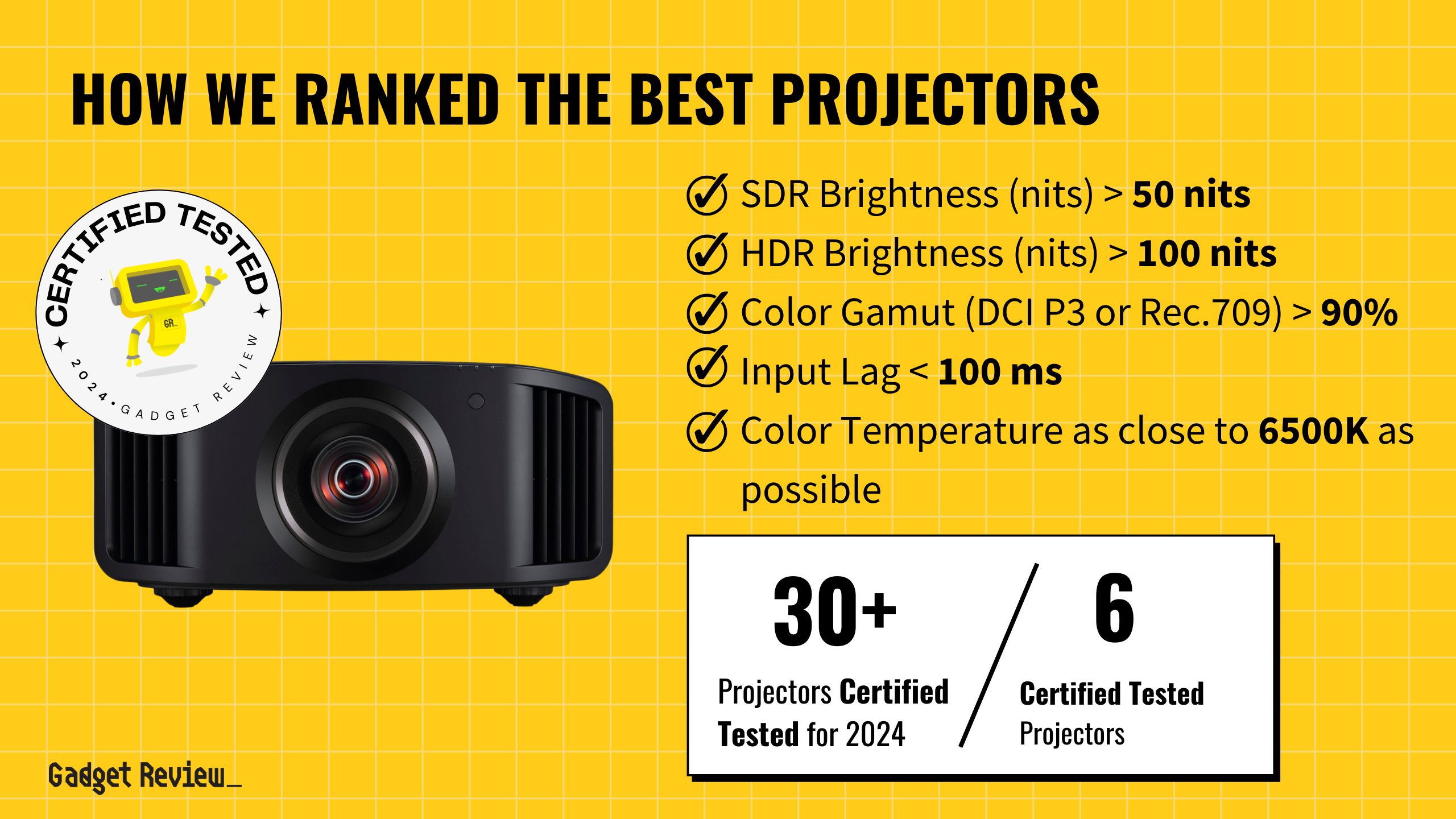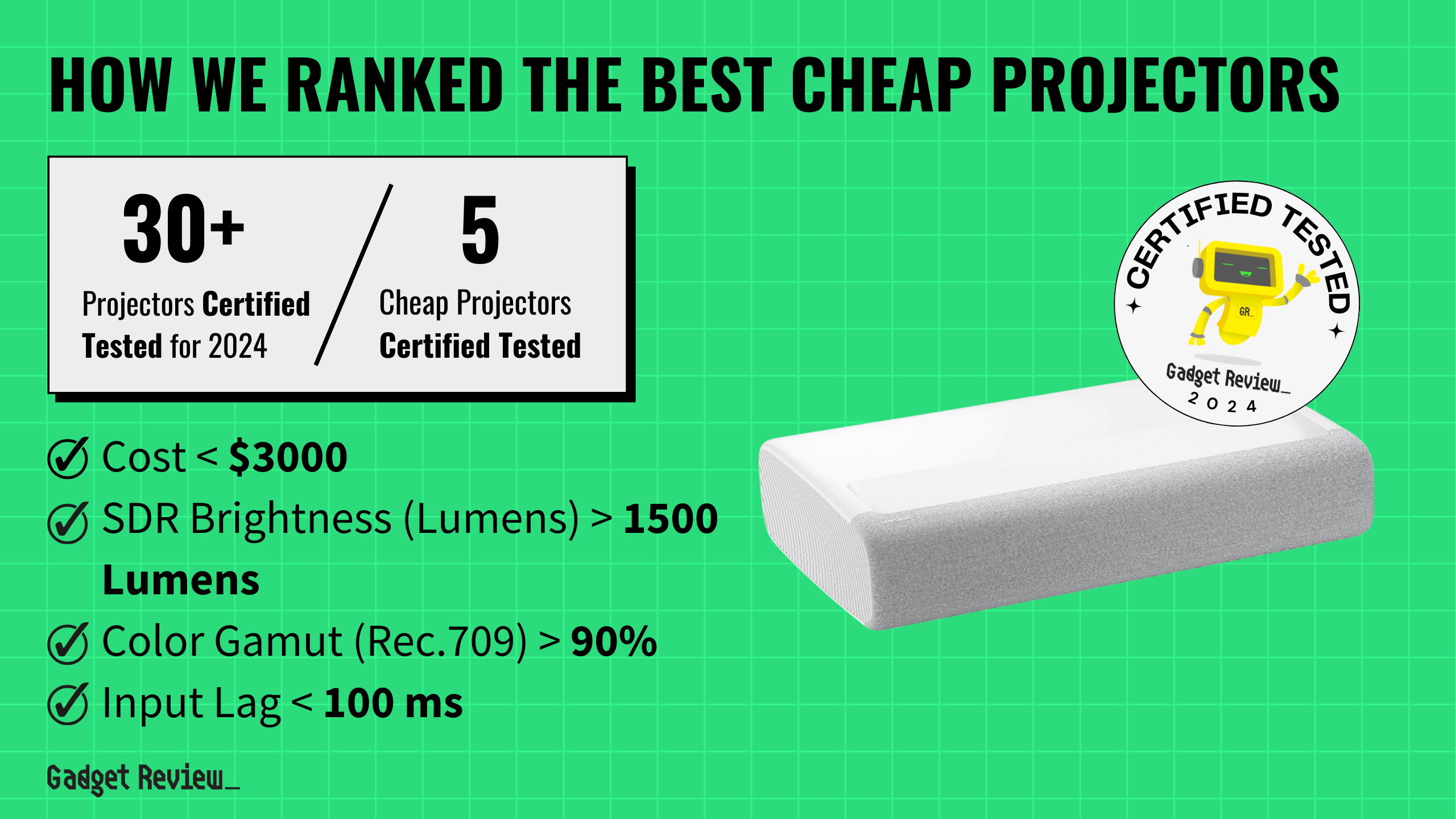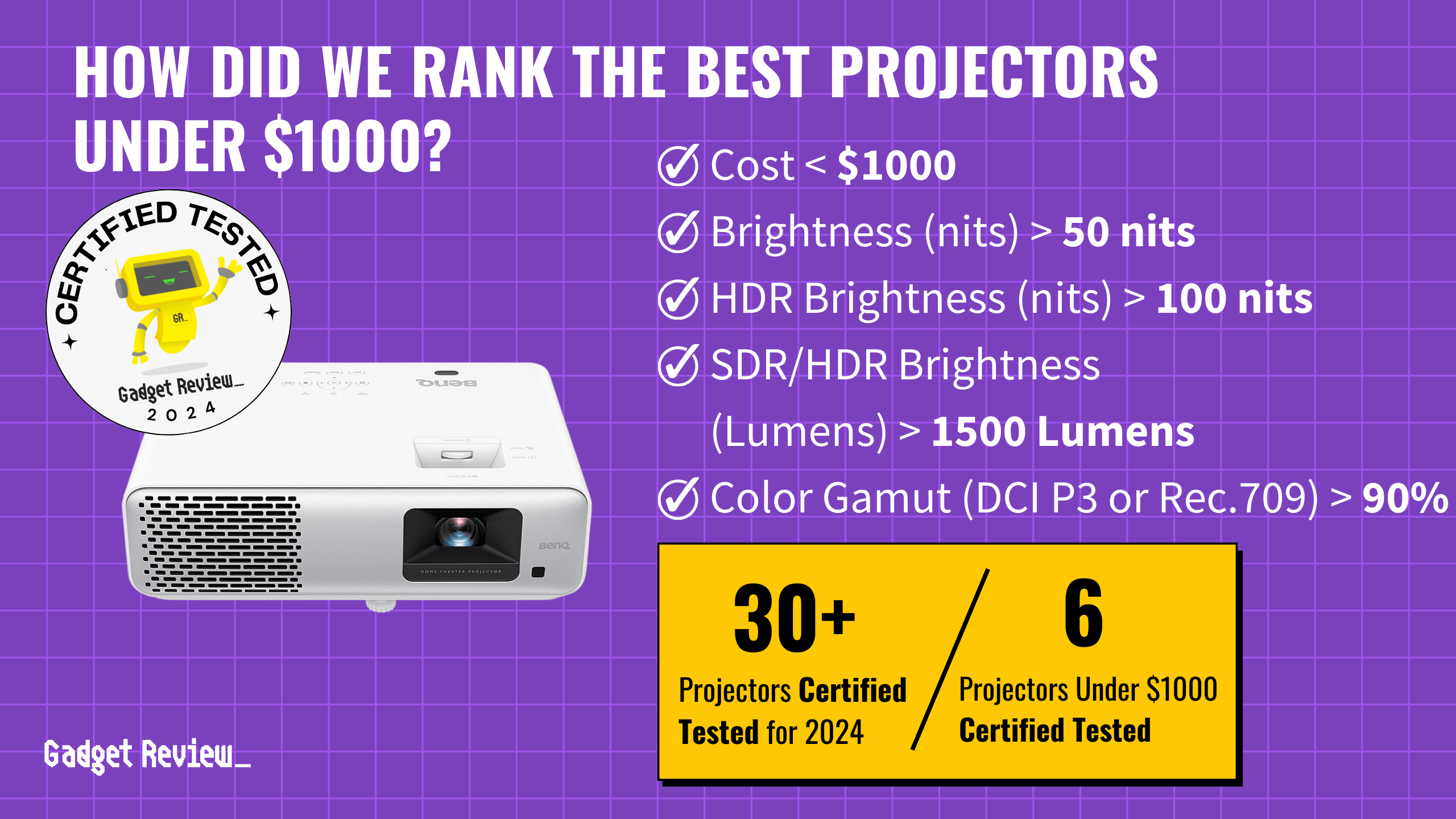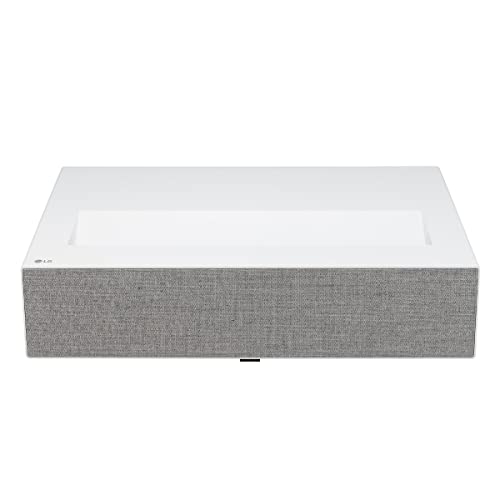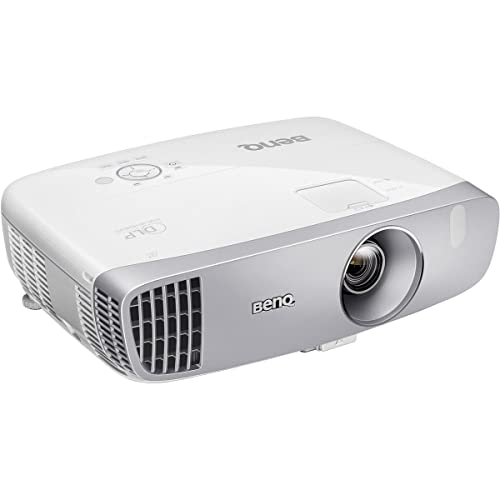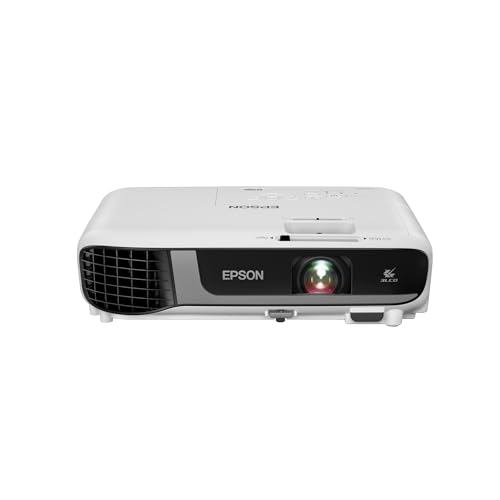When picking a projector for your golf simulator, you want high resolution and brightness for crystal-clear course images. Go for a short or ultra-short throw projector to get big images up close, and cut down on shadows. Don’t forget a solid contrast ratio and accurate color reproduction. Our guide features four top projectors that excelled in testing, chosen from over 30 evaluated models.
We analyzed 10,297 reviews, filtering out untrustworthy sources using our AI-powered True Score system. Our unique approach combines verifying products as tested to ensure only the best products make it to our list. These projectors stood out for their performance, delivering outstanding clarity and responsiveness ideal for a golf simulator setup.
How Did We Rank the Best Projectors for Golf Simulator?
Our guide to the best projectors for golf simulators is grounded in comprehensive research. We reviewed over 200 websites, focusing on testing methodologies and expert reviews. By analyzing customer feedback, we identified 1 crucial specifications. This thorough approach allows us to highlight projectors that excel in delivering sharp images and minimal lag, crucial for an immersive golfing experience.
Our commitment to unbiased reviews is powered by our ‘True Score’ system, targeting low quality and fake reviews. When you shop through our links, you’re backing our mission. Dive deeper to see how.
?️ Minimum Specifications
- Mut be a short throw projector
Latest Updates
- 05/15/2024: Published the list of best projectors for golf simulator based on our True Score system.
Top Projectors for Golf Simulators For 2025
Prices accurate at the time of publishing

Best Overall

Runner Up

Best Value

Best Budget

Best Mid-Range

Premium Pick
BenQ TK700STI
Best For Gaming
BenQ TK700STI is ideal for golf simulations. Its 4K resolution, high brightness, and large screen size ensure detailed, immersive visuals.
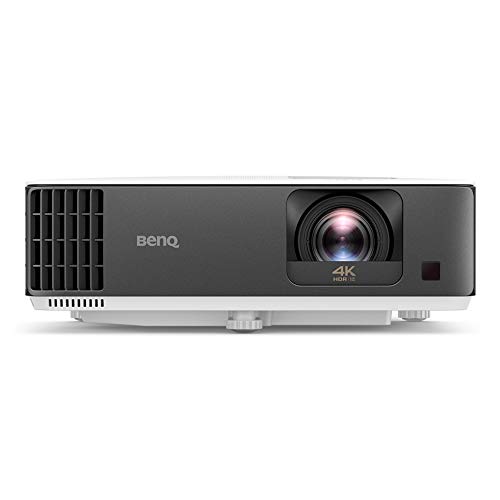
True Score
76776Experts
79261Customers
Mixed Reviews
 SAVE $650$1,699.00$1,049.00
SAVE $650$1,699.00$1,049.00Read More
Snapshot
Reasons to Buy
- Good brightness
- Low input lag
- Great connectivity
- Convenient throw ratio for gaming
Reasons to Avoid
- Subpar image quality
- Mediocre built-in audio quality
Specifications

Resolution 3840 x 2160 (4k) Refresh Rate 60 Hz 
Display Technology DLP 
Contrast Ratio 10,000:1 
Digital Keystone Yes 
HDR Yes 
Max Distance 168″ 
Max Screen Size 200″ 
3D Ready Yes 
Aspect Ratio 16:9 
Brightness 3000 lumens 
Depth 9.70″ 
Height 4.3″ 
Integrated Speakers Yes 
Light Source Laser 
Light Source Life 10000 hrs 
Min Distance 51″ 
Min Screen Size 60″ 
Noise Level 35 dB 
Portable Yes 
Smart Functionality Android TV, Bluetooth, Remote, USB 
Sync Technology – 
TV Tuner No 
ThrowType Short Throw 
Video Inputs HDMI 2.0, RS232, USB 
Weight 6.8 lbs 
Width 12″ Yes – All Specs
Test Results
SDR Brightness (Lumens) 0 HDR Brightness (Lumens) 0 Contrast Ratio (x:y) 1,011 Input Lag (ms) 20 Color Gamut % (Rec. 709) 0 Color Gamut % (DCI P3 uv) 0 All Retailers
- $1,049.00$1,699Save $650
- $1,399.00$1,699Save $300
- $1,399.00$1,599Save $200
Our Verdict
If you’re a golf enthusiast, the BenQ TK700STI offers impressive high resolution and brightness. Ideal for golf simulations, its 4K resolution ensures that every detail, from the course’s lush green to the texture of the sand traps, is vividly captured. With a best-in-class 3,000 lumens of brightness, it guarantees bright and clear visuals, ensuring great visibility even in well-lit indoor spaces. It also has a superior max screen size of 200”, allowing for an expansive display that enhances the immersive experience of a golf simulator, making you feel like you’re on the course.
It features a contrast ratio of 10,000:1, providing deep blacks and bright whites, which enhances the visual depth and realism needed in a golf simulator. Additionally, with smart functionalities like Android TV and Bluetooth, coupled with a short throw ratio, it offers superb ease of use and versatility, enabling quick setup and flexible placement near the hitting area.
The BenQ TK700STI and Optoma ML1080 are premium DLP projectors that provide sharp and reliable image quality. The BenQ boasts 4K resolution and higher brightness for exceptionally detailed visuals, ideal for bright living and conference rooms. On the other hand, the Optoma, with Full HD resolution, is the better value, being much cheaper and still providing great visuals. It offers a high contrast ratio, enhancing visual depth for art exhibitions or detailed graphical presentations.
Although it comes at a higher price and does not boast the highest contrast available, the BenQ TK700STI is still powerful, with crisp visuals that handle indoor lighting effectively. Its 4K resolution paired with smart capabilities makes it a great fit if you want to enrich your golf simulator setup with high-definition and interactive content.
Read Less
Category Snapshot
Projectors
- Total Brands/Products Tested
11 Brands, 30 Products
- Top 2 Brands
Epson, BenQ
- Price Range (Budget-Premium)
$350-$16,000
- Average True Score
81.36
- Important Test Criteria
Brightness (cd/m2)
Contrast Ratio (1000:1) - Most Trusted Testers

- Top Projector Experts
- Typical Warranty
1 year
- Covered by Insurance
Yes – AKKO

Best Overall

Runner Up

Best Value

Best Budget

Best Mid-Range

Premium Pick
Anker Capsule 3
Anker Capsule 3 offers Full HD, smart functionality, and portability, ideal for dimly lit, tight spaces. Its laser technology also ensures vibrant colors.
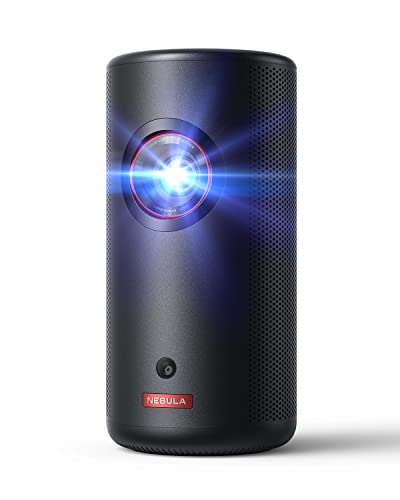
True Score
73748Experts
76439Customers
Mixed Reviews
 $749.99
$749.99Read More
Snapshot
Reasons to Buy
- Good image quality for size
- Reasonably low input lag
Reasons to Avoid
- Poor brightness levels
- No Netflix app
Specifications

Resolution 1920 x 1080 (Full HD) Refresh Rate 60 Hz 
Display Technology DLP 
Contrast Ratio 500:1 
Digital Keystone Yes 
HDR Yes 
Max Distance n/a 
Max Screen Size 120″ 
3D Ready No 
Aspect Ratio 16:9 
Brightness 300 ANSI Lumens 
Depth 6.5″ 
HDMI Type HDMI 2.1 
Height 6.7″ 
Integrated Speakers Yes 
Light Source Laser 
Light Source Life 30,000 hrs 
Min Distance n/a 
Min Screen Size 60″ 
Noise Level 32 dB 
Portable Yes 
Smart Functionality Android TV, Bluetooth, Google Assistant, Google Cast, Remote, Wi-Fi 
Sync Technology n/a 
TV Tuner No 
ThrowType Short Throw 
Video Inputs HDMI, USB 
Weight 2.1 lbs 
Width 3.2″ All Specs
Test Results
SDR Brightness (Lumens) 175 Contrast Ratio (x:y) 138 Input Lag (ms) 22 Color Gamut % (Rec. 709) 92 Color Gamut % (DCI P3 uv) 75 Color Gamut % (Rec. 2020) 56 All Retailers
- $749.99
- $799.99
Our Verdict
Golf fans looking for a compact projector that doesn’t skimp on visual quality should consider the Anker Capsule 3, which has Full HD resolution and a manageable screen size of up to 120 inches. It’s well-suited for users who need a portable solution without the hassle of a complex setup, making it ideal for business presentations or outdoor movie nights. Its 300 ANSI lumens ensure that it performs best in dimly lit environments like home theaters or evening outdoor events. It has a lower contrast ratio of 500:1, which might limit the detail in darker scenes.
If you value smart functionality, the Anker Capsule 3 stands out with its Android TV integration, Google Assistant, and Wi-Fi capabilities, making it a connectivity hub. If you live in a small space, the Anker Capsule 3’s short throw type is an advantage, allowing for large images from a short distance, ideal for tight spaces like offices. Its lighter weight and integrated speakers further add to its appeal as an all-in-one presentation tool that’s easy to transport and set up.
The Anker Capsule 3 and Kodak Luma 350 offer portability and the same 1080p resolution. The Anker, a laser projector, provides a longer lifespan and more vibrant colors, making it a better fit if you prioritize color accuracy. The Kodak, with its LED technology, provides deeper blacks and supports larger screens. Due to its lower cost and performance, Kodak remains a better value, ideal for budget-conscious consumers.
Despite its mid-range price, the Anker will not suit bright environments where detailed graphics are crucial. However, its short throw ratio, smart features, and ease of use make it a practical option if you’re a golf and home theater enthusiast looking for a straightforward, high-functionality projector.
Read Less

Best Overall

Runner Up

Best Value

Best Budget

Best Mid-Range

Premium Pick
Kodak Luma 350
Kodak Luma 350 offers Full HD resolution and a large screen, perfect for golf enthusiasts on a budget and versatile for movies and presentations.
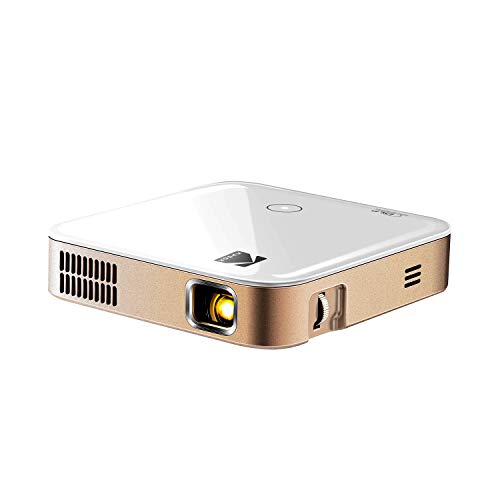
True Score
71724Experts
752kCustomers
Mixed Reviews
 SAVE $50$349.99$299.99
SAVE $50$349.99$299.99Read More
Snapshot
Reasons to Buy
- Exceptional portability
Reasons to Avoid
- Average brightness
- Average image quality
- Prone to rainbow artifacts
Specifications

Resolution 1920 x 1080 (Full HD) Refresh Rate 60 Hz 
Display Technology DLP 
Contrast Ratio 3500:1 
Digital Keystone No 
HDR Yes 
Max Distance n/a 
Max Screen Size 200″ 
3D Ready n/a 
Aspect Ratio 16:9 
Brightness 350 lumens 
Depth 4.5″ 
HDMI Type 2.0 
Height 1.25″ 
Integrated Speakers Yes 
Light Source LED 
Light Source Life 20000 hrs 
Min Distance n/a 
Min Screen Size 40″ 
Noise Level 30 dB 
Portable Yes 
Smart Functionality Android TV, Bluetooth, Remote, USB 
Sync Technology n/a 
TV Tuner No 
ThrowType Short Throw 
Video Inputs HDMI 2.0, USB 
Weight 0.72 lbs 
Width 4.45″ All Specs
Test Results
SDR Brightness (Lumens) 129 Contrast Ratio (x:y) 130 Color Gamut % (Rec. 709) 96 SDR Color Temperature (K) 8,855 Color Gamut % (Rec. 2020) 61 All Retailers
- $299.99$350Save $50
Our Verdict
If you’re a golf enthusiast on a budget, the Kodak Luma 350 is a solid projector that combines performance with value. With its Full HD resolution and superior maximum screen size of up to 200 inches, this projector is perfect if you want to bring a golf course into your home. It also also movie nights and business presentations due to its versatility.
The Kodak Luma 350 boasts a contrast ratio of 3500:1, ensuring that details are visible in darker scenes, which is crucial for viewing films with night scenes or presentations with dense graphics. This LED projector enhances color fidelity and depth, with a brightness of 350 lumens, making it most suitable for use in low-light conditions.
If you compare it to the Anker Capsule 3, both projectors are lightweight for portability and have the same 1080p resolution. The Kodak Luma 350 has a superior contrast ratio and larger potential screen size, making it a better option if you need more detailed visuals in a larger space. It’s also a better value given the cheaper price for its performance. The Anker Capsule 3, as a laser projector, offers enhanced color accuracy and longer lifespan, providing vibrant visuals.
For golf and movie fans, the Kodak Luma 350’s short throw ratio and integrated speakers simplify setup and use, ideal for spaces where equipment portability and quick setup are necessary. Though its brightness may not handle well-lit rooms perfectly, its price and performance in controlled lighting conditions, high contrast, and large screen capabilities still make it an excellent value.
Read Less

Best Overall

Runner Up

Best Value

Best Budget

Best Mid-Range

Premium Pick
Optoma ML1080
Optoma ML1080 excels in golf simulators and home theaters with exceptional contrast and HDR, ideal for detailed, immersive viewing in controlled lighting.
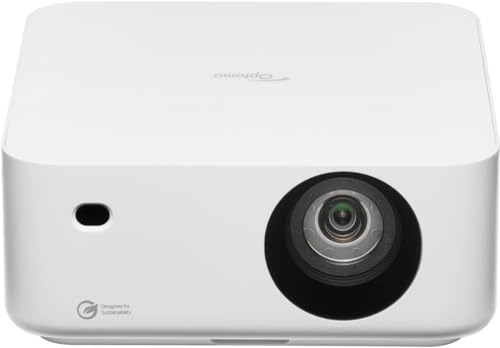
True Score
71722Experts
74294Customers
Mixed Reviews
 SAVE $242$989.00$746.92
SAVE $242$989.00$746.92Read More
Snapshot
Reasons to Buy
- Impressive brightness rating
- High image quality
Reasons to Avoid
- No support for digital keystone correction
- No support for lens shift adjustment
Specifications

Resolution 1920 x 1080 (Full HD) Refresh Rate 60 Hz 
Display Technology DLP 
Contrast Ratio 3,000,000:1 
Digital Keystone Yes 
HDR HDR10, Hybrid Log-Gamma (HLG) 
Max Distance 104.6″ 
Max Screen Size 100″ 
3D Ready No 
Aspect Ratio 16:9 
Brightness 1200 Lumens 
Depth 5.3″ 
Height 2.6″ 
Integrated Speakers Yes 
Light Source Laser 
Light Source Life 30,000 hrs 
Min Distance 62.75″ 
Min Screen Size 59.84″ 
Noise Level 28 dB 
Portable Yes 
Smart Functionality Eco-Friendly, Energy-Saving 
Sync Technology – 
TV Tuner No 
ThrowType Short Throw 
VRR n/a 
Video Inputs USB 
Weight 2.2 lbs 
Width 6.18″ Yes – All Specs
Test Results
SDR Brightness (Lumens) 586 Input Lag (ms) 25 Color Gamut % (BT.2020) 105 All Retailers
- $746.92$989Save $242
- $989.00
- $1,023.32$1,749Save $726
Our Verdict
If you want a projector that enhances your golf simulator experience with clear visuals, the Optoma ML1080 stands out with its best-in-class contrast. Its extraordinary contrast ratio of 3,000,000:1 ensures that both the bright and dark scenes are rich with detail, providing a depth of image that is essential for realistic simulations and engaging movie-watching. With its Full HD resolution and a maximum screen size of 100 inches, this projector is good for small home theaters and gaming sessions, where detail and screen immersion are key. Its brightness of 1200 lumens is best suited for controlled lighting environments, as it may not be sufficient for rooms with significant ambient light.
If you compare the Optoma ML1080 to the Anker Capsule 3, both are short-throw laser projectors with the same resolution. The Optoma excels with its higher contrast ratio, which is crucial for delivering superior image quality. The Anker has a slightly higher max screen size if you need the extra length, and it’s more affordable while still providing solid visual performance.
Despite its high price tag and limited brightness, the Optoma ML1080 offers top-tier color and detail thanks to its contrast, HDR10, and Hybrid Log-Gamma. Its display quality and functionality strengths make it a solid choice for golf simulators, presentations, and outdoor movies at night. Whether you’re a business professional or a home theater enthusiast, the Optoma ML1080 provides robust performance that justifies the investment.
Read Less
Which Criteria Matters for Testing the Best Mini Projectors
By focusing on these criteria, any one can quickly and easily compare these projects and how they’ll perform. This help you make an informed decision and purchase a projector that will meet your needs.
| CRITERIA | RANGE | REQUIRED | DEFINITION |
|---|---|---|---|
| SDR Brightness (lumens) | > 1000 lumens | Yes | The amount of light the projector outputs from the lamp/bulb and projects onto the screen when playing SDR content. |
| HDR Brightness (lumens) | > 2000 lumens | No (Nice to have) | The amount of light the projector outputs from the lamp/bulb and projects onto the screen when playing HDR content. |
| Contrast Ratio | > 2000:1 | Yes | The difference between the brightest white and darkest black that a projector can produce, expressed as a ratio. |
| Color Gamut % (DCI P3) | > 90% | No (Nice to have) | The % of colors a projector can produce defined by the gamut. DCI-P3 is commonly used in film. |
| Color Gamut % (Rec. 709) | > 90% | No (Nice to have) | The % of colors a projector can produce defined by the gamut. Rec. 709 is commonly used by HD TV, and is also known as BT.709. |
| Color Gamut % (Rec. 2020) | > 70% | No (Nice to have) | The % of colors a projector can produce defined by the gamut. Rec.2020 is commonly used by UHD TV content, as well as HDR content. It is also known as BT.2020. |
| Input Lag | < 40 ms | No (Nice to have) | The amount of time it takes for inputs to be registered and processed by the projector and shown on screen. |
Our Trusted Data Sources
We looked at 86+ projector reviewers and found that 16 are trustworthy (60%+ Trust Rating). The three we have listed below are our most trusted for projector.
- Pierre-Olivier Jourdenais – Rtings, LinkedIn
- Geoffrey Morrison – CNET, MuckRack
- Kam Valentine – Projector Reviews, MuckRack
Interested in a comprehensive analysis of our data sources? We’ve got you covered. Below, you’ll find a detailed list of every projector review website we’ve identified, organized by their respective Trust Ratings from highest to lowest. But we didn’t stop there. We’ve meticulously reviewed each publication and verified the data by checking whether the authors have bio links to MuckRack or LinkedIn. We’re committed to not only checking the facts but ensuring their veracity.
Projector Specifications, Test Data & Results
Disclaimer:
Projectors are complex and difficult to test and evaluate, requiring extensive testing on the same level as televisions to paint a complete picture of how any given unit performs. Unfortunately, the testing behind projectors isn’t as rigorous, and a lot of the data we’ve compiled from expert reviewers has been incomplete at times. With different brightnesses measured from different sources, different color gamut tested and spotty contrast ratio measurements, we’ve done the best we can to leverage the available data when putting together these lists but have also trusted our True Score to help us make decisions when the data isn’t available.
1. Brightness (Lumens) Specifications
Brightness (Lumens)
Definition: The amount of light the projector outputs from the lamp/bulb and projects onto the screen when playing SDR content, measured in lumens.
Units of Measurement: Lumens
Tools to Measure: Lux meter
Why It’s Important:
Lumens affect how an image is going to look when projected on a screen. If the projector isn’t putting out enough light, the image quality will suffer.
Projectors have two ways you can realistically measure brightness: in lumens or in nits. Lumens are more common, but brightness in general matters because projectors have to project light strongly enough that it overcomes ambient light without losing detail or color.
Most of the time, a projector is going to be used in a fairly dark room to help give the unit the best chance of displaying content the way it was intended, but higher lumens output let you watch content in progressively bright spaces – or across longer distances on bigger screens. For standard dynamic range content, we recommend at least 1000 lumens for most home applications, but more isn’t a bad thing, and 3000 lumens or more are ideal.
Brightness (Lumens; higher is better; 0 = No Data)
2. Height Specifications
Mini projectors have to actually be “portable”mini”, and one way to confirm that is by looking at the measurements of the projector. Height gives you a decent idea of where you can set a projector, particularly if you want to stow it in a bag or place it on a set of shelves.
We don’t have a specific recommended size for height; you simply need the projector be short enough to suit your needs, which varies depending what kind of storage solution you have for the projector.
Height
Definition: The physical height of the projector.
Units of Measurement: ” (inches)
Why It’s Important:
If a projector is too tall, you’ll have difficulty putting it in tight places, which defeats the purpose of buying a “mini” projector.
Height (Inches; 0 = No Data)
3. Width Specifications
Width
Definition: The physical width of the projector.
Units of Measurement: ” (inches)
Why It’s Important:
If a projector is too wide, you’ll have difficulty putting it in tight places, which defeats the purpose of buying a “mini” projector.
Width is just as important as height when it comes to mini projectors. Get too wide and you’ll run into significant issues with being able to place the projector wherever you want, which is the whole point of getting a mini projector.
We don’t have a recommended size for width; you just need the projector to have a small enough footprint that you can put it wherever you want to or need to.
Width (Inches; 0 = No Data)
4. Noise Level Specifications
Projectors make noise when they’re running, and if the noise level is high, it’s going to start cutting into the content you’re watching. This is distracting, so the quieter a projector can run, the better.
That said, there’s no real “ideal” noise level for your projector, it just shouldn’t exceed 40 dB. For reference, a typical conversation is about 60 dB.
Noise Level
Definition: The amount of noise the projector makes under normal operation.
Units of Measurement: dB (Decibels)
Why It’s Important:
If a projector is loud, it’ll start to distract you when watching movies, especially during quite moments.
Noise Level (dB; 0 = No Data)
5. Maximum Screen Size Specifications
Maximum Screen Size
Definition: The largest screen size a projector can effectively produce without losing focus or quality.
Units of Measurement: ” (inches)
Why It’s Important:
If you have a wall and/or a very large screen that you want filled up with as large an image as possible, maximum screen size is how you fill it up.
Projectors can produce images of varying sizes, and the maximum screen size is as the name suggests: the maximum size screen a projector can output. Anything larger and you start to lose focus and quality.
We don’t recommend a maximum screen size for most applications unless you’re trying to use a projector for a church or outdoors on something like a garage wall. Generally speaking, you should opt for a maximum screen size that is no larger than what you’d realistically try to project. You don’t have to avoid projectors with large screen sizes, but there’s no reason to pay extra if, for example, that’s the only difference between the two choices you’ve narrowed things down to.
Maximum Screen Size(inches; 0 = No Data)
Best Projectors for Golf Simulator: Mistakes To Avoid
- Ignoring Brightness Requirements: Choosing a projector with insufficient brightness can lead to poor image quality in your golf simulator setup. Ensure the projector has at least 2,500 lumens for indoor use to provide clear and vibrant images, especially in well-lit rooms.
- Overlooking Resolution: Opting for a projector with low resolution can result in blurry or pixelated images, which can detract from the realism of your golf simulator. Aim for at least 1080p resolution, with 4K being preferable for the best visual experience. Be sure to know the pros and cons of 1080p and 4K resolutions first.
- Neglecting Throw Distance and Throw Ratio: Not considering the throw distance and throw ratio can lead to improper image sizing. Ensure the projector has a short throw or ultra-short throw capability to produce a large image from a short distance, which is ideal for golf simulators.
- Disregarding Aspect Ratio: Using a projector with the wrong aspect ratio can distort the image. For golf simulators, a 16:9 aspect ratio is generally recommended as it matches the widescreen format used in most simulator software. Projector screen aspect ratios are fixed, so make sure you get the ideal one for optimal projection.
The Best Projectors for Golf Simulator Tests & Specs Compared
Product |
True Score
|
SDR Brightness
|
HDR Brightness
|
Contrast Ratio
|
Color Gamut % (DCI P3 uv)
|
Input Lag (ms)
|
Refresh Rate
|
Max Screen Size
|
Minimum Distance
|
Maximum Distance
|
|---|---|---|---|---|---|---|---|---|---|---|
| 76 |
|
|
|
|
|
|
|
| $1,049.00 $1,699 $650 |
| 73 |
|
|
|
|
|
|
|
| $749.99 |
71 |
|
|
|
|
|
|
|
| $299.99 $350 $50 | |
71 |
|
|
|
|
|
|
|
| $746.92 $989 $242 |







